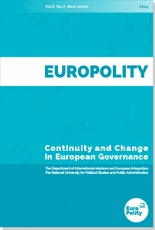
We kindly inform you that, as long as the subject affiliation of our 300.000+ articles is in progress, you might get unsufficient or no results on your third level or second level search. In this case, please broaden your search criteria.


This paper opens up the black box of enlargement, focusing on how the intra-organizational relationships among the Council of the European Union, the European Commission, and the European Parliament affect the process of enlargement. Formally speaking, enlargement is an intergovernmental process, suggesting that member states are firmly in control of its outcomes. However, the EU’s supranational actors, specifically the European Parliament and European Commission also attempt to influence enlargement at various stages. I posit that the process of enlargement to the Western Balkans has evolved, influenced by changing constraints which are operating on the aforementioned actors. The added value of this work is in disaggregating the enlargement process based on its institutionalized relationships in both a vertical and horizontal dimension. It provides a supply-side argument for how enlargement policy has evolved from within the EU, rather than simply as a function of external factors.
More...
The Balkan region is still a “hot” zone where old legacies of the past interfere with the present and contribute to the transition processes of the countries there. The region seems committed to follow an EU-bound path, although it faces many challenges in terms of meeting the standards for EU and NATO membership. Somehow, persistent conflicts delay finding solutions. The difficult democratic transition, the lack of will and shallow political culture of regional elites delay the process of bringing these countries forward. This profound transition unfortunately occurs while the EU, on one hand, is trying to play the arbitrator part having promised to assume full leadership role and, on the other hand, tries to restrain the voices of those Euro-Sceptics who have been increasing their numbers recently. Meanwhile, a deterioration of the situation in the Balkans might have a negative impact across Europe and decrease the credibility of the EU as the main foreign policy and security actor in the whole region. This paper will first analyse the transition processes in the Balkans and the back and forth efforts to leave behind the past and head toward a common European perspective. Secondly, it will analyse the required active role of the EU and the urgency for a closer monitoring of the situation in this region. Thirdly, it emphasises the need to encourage public diplomacy in the region in order to mitigate conflicts and promote cooperation between the people there.
More...
The purpose of this article is to analyse the security environment at the beginning of the XXIst century and to assess the impact of EU conditionality in the Western Balkans. The paper will analyse the redistribution of power and the new challenges that send the European Union at a crossroad. To explain such complex phenomena, we will use a comprehensive framework based on realism, liberal institutionalism, and constructivism. The central part of the paper will analyse EU conditionality in the Western Balkans – along with its characteristics, particularities, difficulties – and the impact of the degree of sovereignty. The case-study will provide a comparative analysis between EU conditionality in Bosnia and Herzegovina and Bulgaria proving that sovereignty matters for the conditionality-compliance relationship.
More...
review of: ------------------ Gabriela Horoşanu. 2014. NATO-EU: A Smarter Collaboration, Bucharest, Tritonic Publishing House, 194 pages, ISBN: 978-606-8571-41-6.
More...
review of: --------------------- Dan D. Lazea. 2014. Suveranitatea statelor si integrarea europeana a Balcanilor: cazul Serbiei (The Sovereignty of States and the European Integration of the Balkans: The case of Serbia), Timișoara, Western University Publishing House, 257 pages, ISBN: 978-973-125-440-1
More...
After the latest European electoral cycle, right wing parties on the far side of the political spectrum along with right-wing euro-sceptics and conservative anti-federalists won 112 seats. The presence of the radical right in the European Parliament (EP), has often been attributed to the second order election model theorised by Reif and Schmitt (1980). In European elections, turnout is traditionally lower compared to “first” order national elections, parties in government tend to lose vote-shares while smaller parties benefit from the European system of proportional representation. This article analyses the relationship between radical parties and the EP by examining the French and Danish results in the 2014 elections. Though both constitute the third political force in their countries at that time, Front National and Dansk Folkeparti’s electoral support is representative of a second order election. The former party benefited from a classic sanction vote while the second one owes its breakthrough to a particular Danish voting behaviour, somewhat singular in the European Union. The article offers an in-depth overview of the literature on both the radical right, the Second Order Election model as well as radical right parties’ dynamic at the European Parliament level.
More...
System euroatlantycki w wielobiegunowym świecie. Próba prognozy, (ed.) Józef M. Fiszer, Instytut Studiów Politycznych PAN, Warszawa 2014, 172 pages.
More...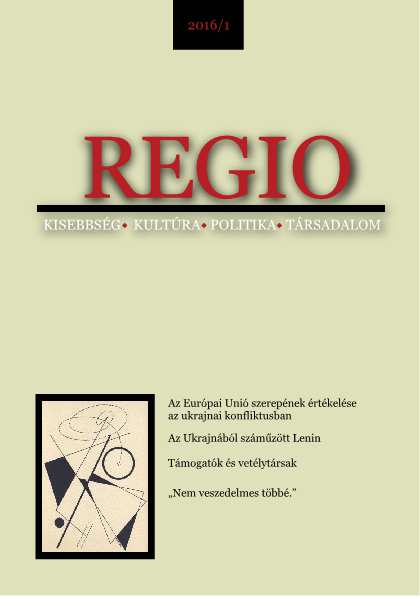

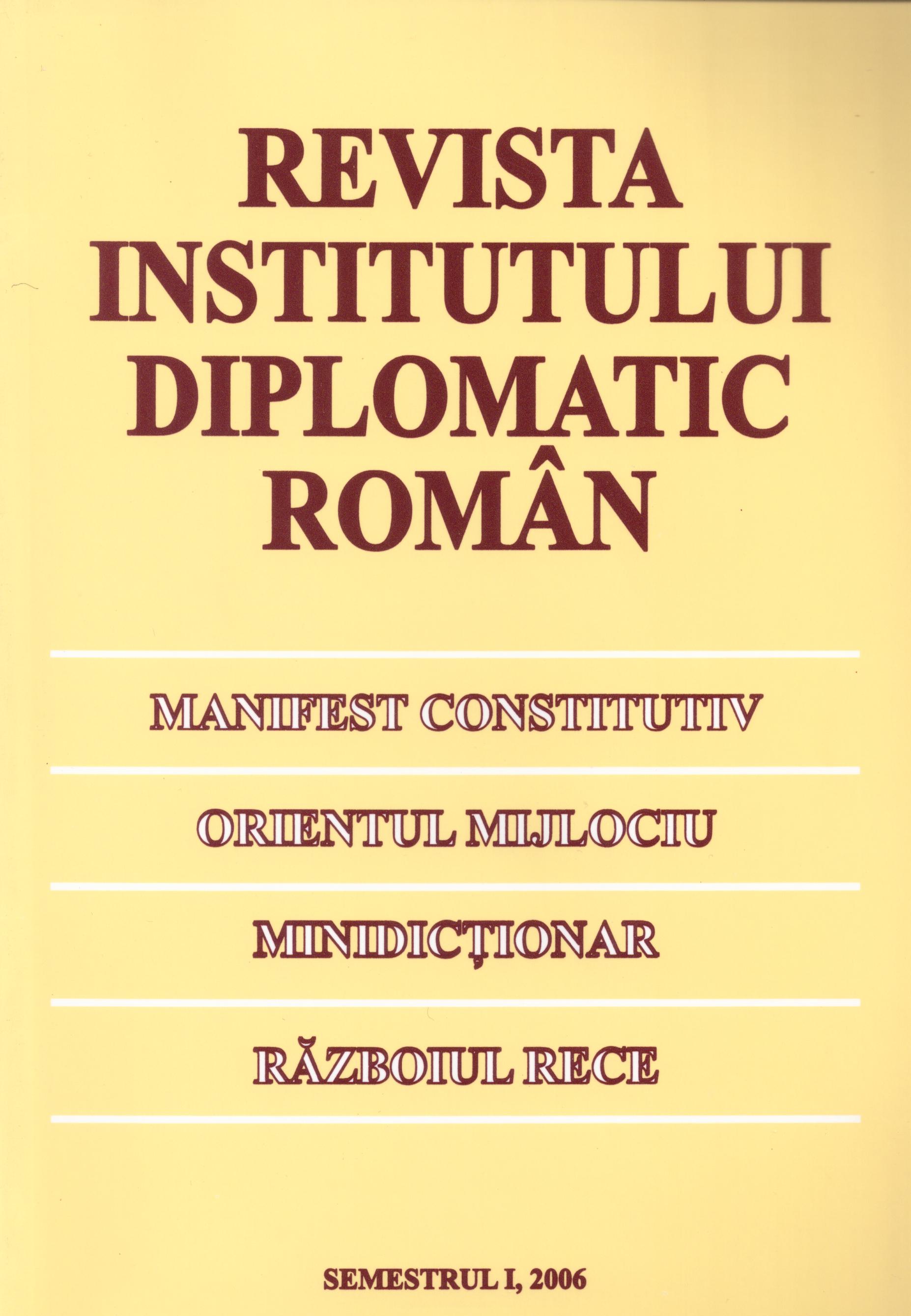
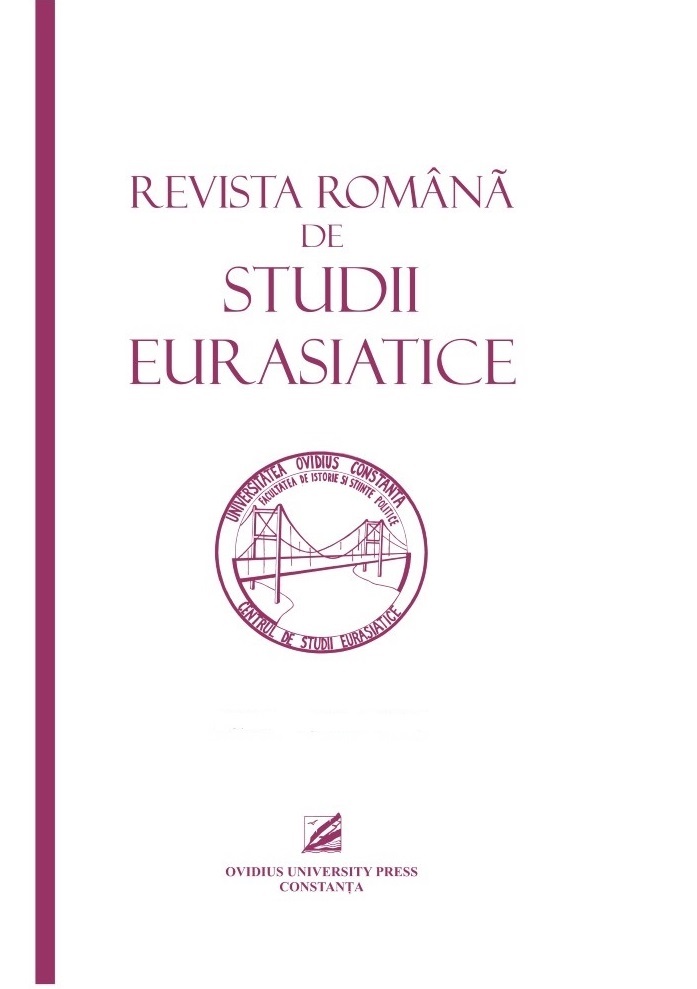
With its official name "the Treaty of Lisbon amending the Treaty on European Union and the Treaty establishing the European Community", the document we are discussing is the most important reform related to the institutional system of the Community. In addition to the changes in power relations between the fundamental institutions of the European Union, the Treaty of Lisbon opens up new perspectives for creating a democratic model based on the rule of law and human rights, two concepts that are now in the focus of the researches. Our hypothesis is that the Treaty has given a new dimension to the institutional system of the Union: it is for the first time to rebalance its powers and to strengthen communication with citizens, establishing concrete ways to emphasize the representative democracy. Finally, medium and long-term evolutions at the institutional level will demonstrate how much the European Union has a high-quality democracy.
More...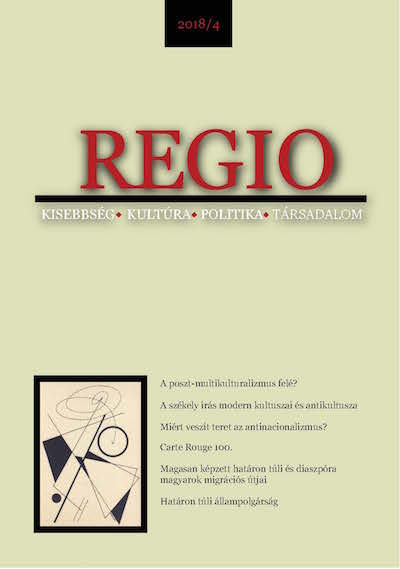
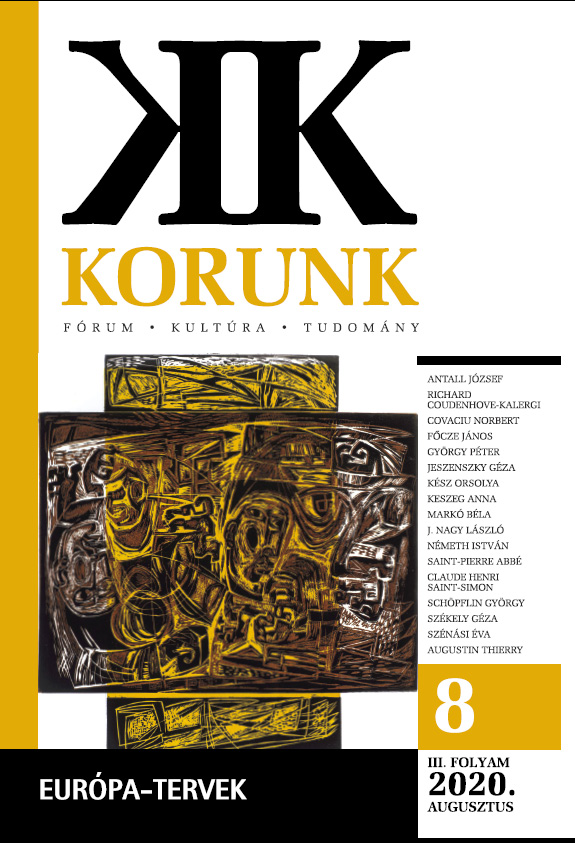
The study maps different versions of the idea of European unity from the beginnings of European civilization to Coudenhove-Kalergi’s concept of Pan-Europa. The study focuses primarily on works and turning points that played a significant role in forming the themes of plans about Europe. Also, it highlights plans related to Hungary, namely György Podjebrád’s Tractatus or the Duke of Sully’s “Grand Design.” Briefly, it also addresses work by lesser known authors like William Penn, Jeremy Bentham and the German thinkers Karl Friedrich Krause and Julius Fröbel. The study is concluded by an analysis of Coudenhove-Kalergi‘s Pan-Europa because of its double significance. Firstly, it provided a succinct account of the situation in Europe; secondly, its suggestions appear in roadmaps for political reconciliation between the two world wars (Briand memorandum). In sum, many institutional, economic, and political initiatives by the “grand prophets” have been realized in the course of European integration.
More...
The will for peace led intellectuals and then politicians to lay the foundations of the community of European states and to eradicate in this way the possibilities of war within the European continent. After WWII the German question and the Cold War atmosphere resulted in the creation of the socalled Montanunion (European Coal and Steel Community) that based the production of coal and steel on a French-German cooperation. After its success, in 1957, the European Economic Community was created, with the aim of realizing a more and more tight union between Europe’s nations. The plan was widely discussed beginning with the 1970s. First, the bases of European identity were discussed. Beginning with the 1980s, in the EEC, already consisting of 12 states, plans referring to the creation of a political union were discussed at a very concrete level. This process resulted after much compromise on every side in the European Union’s Treaty in 1993, largely due to the political changes in Eastern Europe.
More...
Europe today is a polis, a political community with its own idiosyncrasies, habits, thought patterns, identity or identities and, as with all identity collectives, a mythic narrative of the past and a vision of its future. At the same time, the Europan Union with all its institutions, the member states, the elites, the civil society ecosystem that surrounds the EU, represents the totality of interaction between these various bodies. This European polis is incomplete, in as much as its constituent members have powers and legal rights in which the polis has no capacities. Europe is structured by asymmetries of power, frequently allowing the stronger to coerce the weaker. Formally all member states enjoy parity of esteem; in reality, this is not so and the large states regularly seek to impose their ideas on the smaller ones. In sum, the European polis is marked by the same contradictions that are inherent in Europe’s diversity. The task for Europe, from the current perspective, is to establish the necessary equilibrium and not to lose sight of it.
More...
This essay, written by the foreign minister of the government under discussion (a historian by profession) recounts that by the adoption of Christianity in A. D. 1000 the Kingdom of Hungary became an integral part of what was called (until recently) Western Civilisation. During its defensive wars against the “pagan” Ottoman Empire it became a common theme among its inhabitants that they were a bastion (antemurale) of western Christianity – a notion held by many even today. Economic and political factors explain why the eastern half of Europe fell back in development, leading to a general desire to catch up with the advanced West. Communism, Fascism and Nazism seemed to offer an alternative, but by the 1950s they became thoroughly discredited. “Return to [Western] Europe” was the battle cry in Hungary and throughout Central Europe of the democrats who played an important part in the peaceful dismantling of the Iron Curtain and Communism in 1989/90. Free elections in Hungary in the following Spring led to the formation of a centre-right coalition led by József Antall and his Hungarian Democratic Forum. The government’s program centred upon integration with the European Community and its values. Antall’s memorable address to the Parliamentary Assembly of the Council of Europe in Budapest on the 30th June 1992 was a testimony to Hungary’s traditional dedication to the European ideals. There was a strong hope in Hungary then that in a united Europe the ill-treatment of people belonging to national minorities in the states neighbouring Hungary, amounting up to three million people, would come to an end.
More...

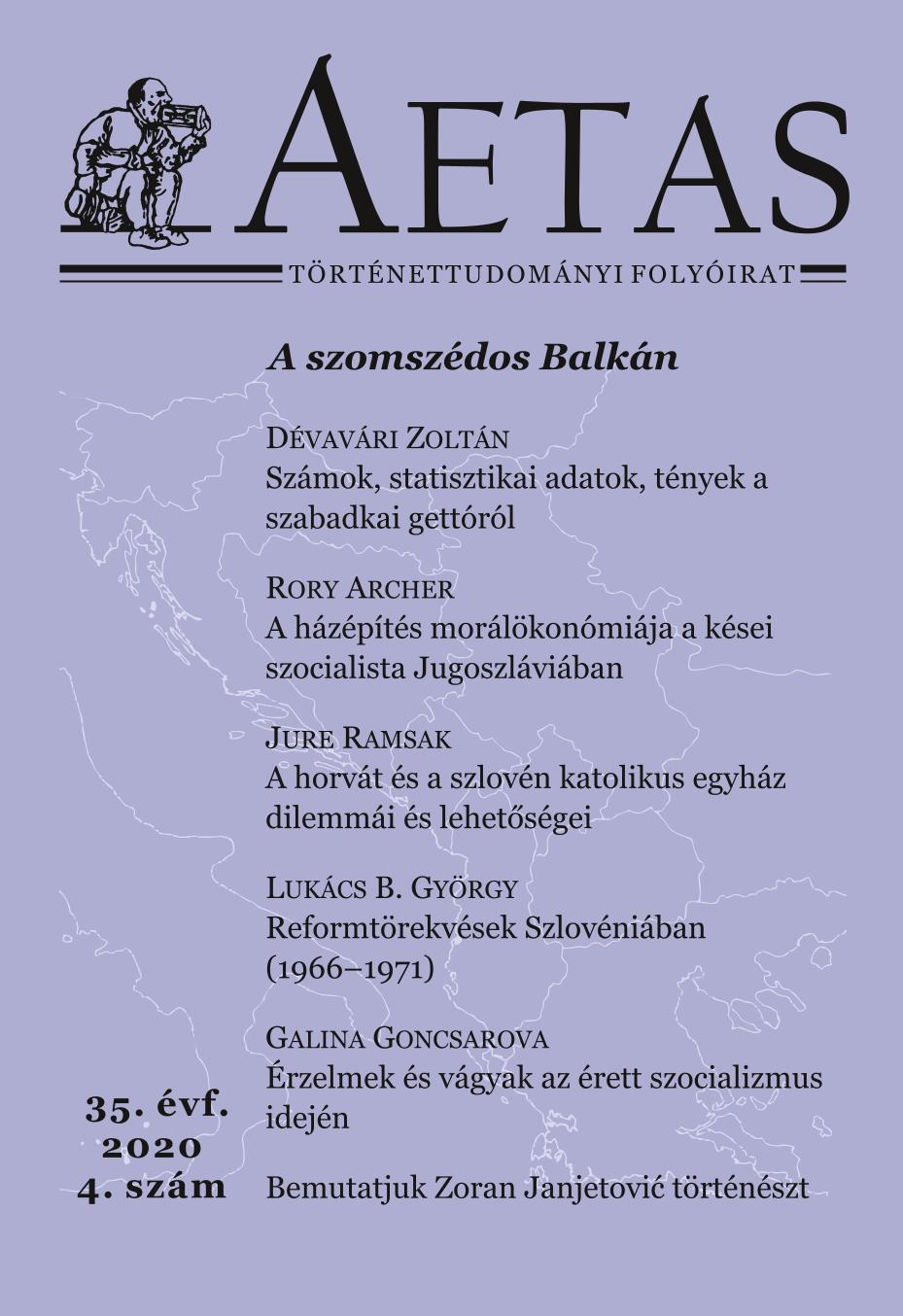
Malte Zabel: Euroskeptizismus. Ursprünge und Ausdrucksformen im Verlauf des europäischen Integrationsprozesses. Nomos, Baden-Baden, 2017. 407 oldal
More...